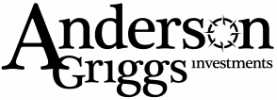|
Benjamin Graham, Warren Buffett, Seth Klarman, John Templeton, Howard Marks, John Neff, Walter Schloss, Max Heine, Michael Price, Peter Lynch, Wilbur Ross, and many other investment managers created wealth for themselves and their clients based on the belief that the market price for an investment will, at times, vary substantially from the intrinsic value of the investment. Knowing that superior returns are possible, as these individuals have shown over time, why do many investors today believe markets are so efficient that prices are always correct, and shun any idea that market prices can be wrong? I wish I could give you the answer to this, but I can’t. I can tell you that the individuals I listed, who found a way to capitalize on this discrepancy in the public markets, are considered an anomaly in the world of investment managers. Besides the skill needed to perform the fundamental work of discovering intrinsic value, it also takes a certain personality to take advantage of any price differences. Perhaps it is the personality of those individuals that makes for the anomaly, and not a superior quantitative security selection process. This is what Seth Klarman wrote in his year-end letter to his clients discussing the human qualities of a successful investor: ...a successful investor must possess a number of seemingly contradictory qualities. These include the arrogance to act, and act decisively, and the humility to know that you could be wrong. The acuity, flexibility, and willingness to change your mind when you realize you are wrong, and the stubbornness to refuse to do so when you remain justifiably confident in your thesis. The conviction to concentrate your portfolio in your very best ideas, and the common sense to nevertheless diversify your holdings. A healthy skepticism, but not blind contrarianism. A deep respect for the lessons of history balanced by the knowledge that things regularly happen that have never before occurred. And, finally the integrity to admit mistakes, the fortitude to risk making more of them, and the intellectual honesty not to confuse luck with skill... You don’t become a value investor for the group hugs. What Mr. Klarman is telling us is that an average investor would be better off not trying to earn superior returns at all. As more and more individuals, financial advisors, and institutional consultants realize this, they adopt an approach to investment management that is basically “if you can’t beat ‘em, join ‘em.” This may explain the ever increasing amount of investment dollars placed into passively managed index funds. I have been told my entire life that I am a little “abnormal,” and so I find the group of oddballs who continue to seek out superior returns my kin, though maybe more like second or third cousins than brothers or sisters. One trait we all have in common is a belief in the concept of “margin of safety,” originally put forth by Benjamin Graham in his book The Intelligent Investor: In the old legend the wise men finally boiled down the history of mortal affairs into the single phrase, “This too will pass.” Confronted with a like challenge to distill the secret of sound investment into three words, we venture the motto, MARGIN OF SAFETY. How value investors incorporate a margin of safety into their investment management process varies with each manager and with each investment being considered. Our approach may or may not resemble any others, so we will share with you a simple hypothetical illustration that may help you understand. For the vast majority of investors there are only two ways to invest. You can lend your money in return for a set rate of interest and a promise to be repaid at some point in the future, or you can own an asset and earn the rewards of ownership or absorb the losses of that ownership. You have thousands upon thousands of choices as to whom you lend to or what you own. Lending money comes with a higher level of certainty when compared to an ownership interest in an asset. If the loan is made with some guaranteed backing of the principle, i.e., The US Government Taxing Authority, a conservative investor can rest assured that they will indeed receive the promised interest and principal at maturity. On the other hand, if we decide to own an asset and share in the risk and reward of that ownership, then we should at the very least have some acceptable method of estimating the future value of the investment. The difference between this estimate of future value, and the alternative risk-free rate offered for a loan of the same time frame, is the MARGIN OF SAFETY. Here is a simple example of margin of safety:
We expect XYZ Corp. to continue to earn 10% on invested capital ($1.00 of earning for the $10.00 purchase price) per share for the next 10 years, to pay us our 3% dividend, and grow at 7% per year through reinvested earnings. Value of this investment without certainty would come from a combination of: a. $300.00 dividend increasing annually by 7% for 10 years = $4,144.95 b. $10,000.00 compounded at 7% for 10 years = $19,671.51 Or have a total expected value of $23,816.46. The MARGIN OF SAFETY in this example would be $11,816.46, or the estimated value of the Ownership Option ($23,816.46) less the certain value of the Lending Option ($12,000.00). Ten years is a long time for all of us and we can be assured that things will change. It is a bit naive to think a company can earn a constant annual growth rate for the full term. It is just as naïve to think that the investing public will consistently value the company at 10x earnings per share. Because we do know that the future will unfold in various ways, a margin of safety, conservatively calculated, should be required for all conservative investors. The margin of safety illustrated above may seem irrational. Let’s look a little closer at the numbers we chose. First, the compounded rate of return shown for XYZ Corp. is a little over 9% for the 10 year period, which is very close to the long-term average return for the S&P 500 the past 100 years or so. In addition, the earnings yield of XYZ Corp. is 10% ($1.00/$10.00). As of February 12th of this year, there are 72 companies that are members of the S&P 500 and are available to purchase at a 10% or higher earnings yield based on trailing earnings. If forward earnings is your preferred method of measurement then the S&P 500 contained 76 companies that fit that bill too. Being able to buy a piece of a business with a 10% earnings yield on cost is not abnormal. We began this letter naming a few of the great value managers of the last 50 years and with a quote from Seth Klarman. These managers have applied a value approach of investing in many different areas. Some chose to look at bonds, others real estate, a few have looked for asset bargains, while still others have placed more emphasis on the quality of management and the ability to produce future growth, which is what we do. In all cases, finding and purchasing securities whose price departs appreciably from the underlying value of the security does provide a margin of safety. I will end as I started with another quote from Seth Klarman, taken from his book Margin of Safety: There is simply no question that investors applying disciplined analysis can identify inefficiently priced securities, buy and sell accordingly, and achieve superior returns. Until next time,
Kendall J. Anderson, CFA Comments are closed.
|
Kendall J. Anderson, CFA, Founder
Justin T. Anderson, President
Categories
All
Archives
April 2024
|
|
Common Sense Investment Management for Intelligent Investors
|



 RSS Feed
RSS Feed